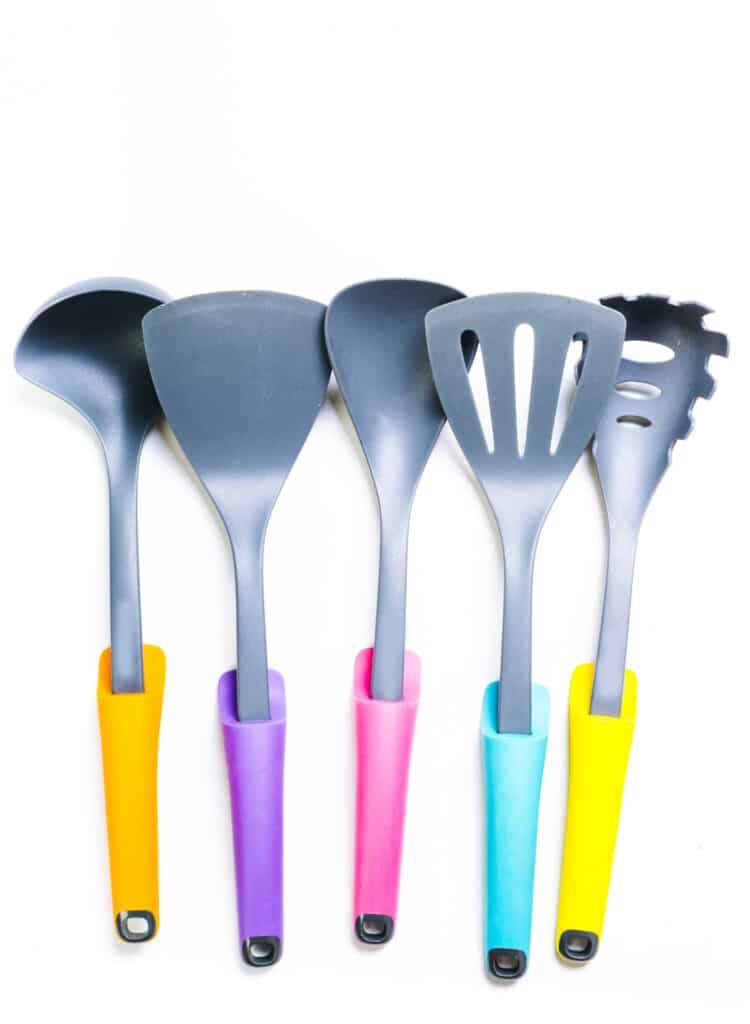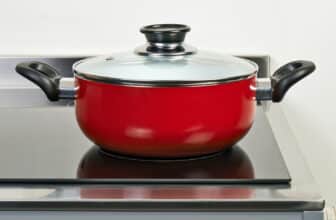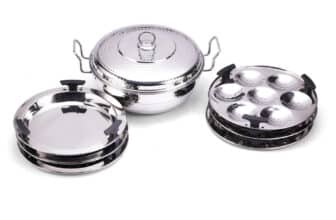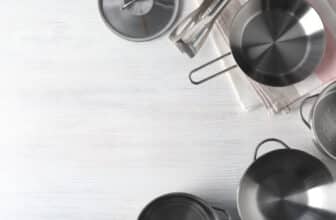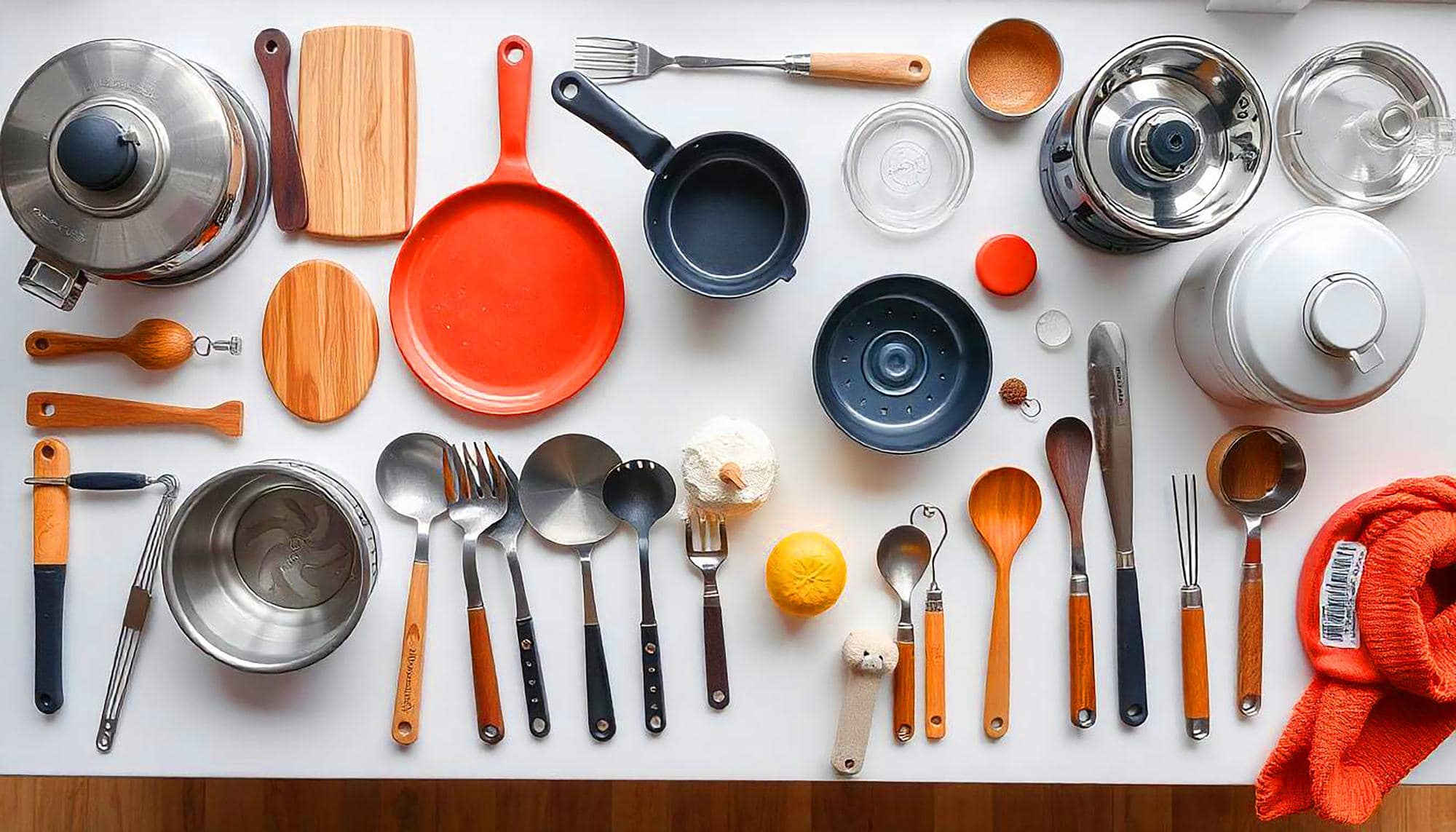
Choosing the Right Utensils to Protect Your Non-Stick Pan
Non-stick pans are rather fixtures of most of the kitchen, quite popular for making cooking and clean-up easy as a breeze. Using the wrong utensils, however, will most likely permanently damage the non-stick coating, affecting your cookware’s ability to do its job (or even leading to greasiness) and shorten its life span. Dual handles seal lid to countertops covers; interchangeable lid; two covered handles for better fit; Great for eggs, sautéing and pancakes — nothing sticks and easy to clean.
This guide to the best cooking utensils for non stick pans cookware will cover why you need to choose the proper ones designated to work with non-stick pans, what materials you should look out for and how to keep them for longer use. Armed with the right tools — and a little bit of care — your non-stick pans will be in tip-top shape to make cooking easy and enjoyable.
- What Gives Nonstick Pots Their Magic Touch?
- Why You Require Best Cooking Utensils for Non Stick Pans?
- Why You Need the Right Utensils With Non-Stick Pans?
- What Are the Best Materials for Non-Stick Cooking Utensils?
- Turn Your Non-Stick Pan Utensils Into Your Friends
- Our Expert Recommendationto Shop
- Factors to Keep in Mind While Making Meals
- How to Maintain X Non-Stick Cooking Utensils
- Our Expertise: Why Believe Us!
- Final Consideration
- How We Tested & Reviewed
What Gives Nonstick Pots Their Magic Touch?
Non-stick cookware features a surface that is designed to repel foodstuffs. This same film makes cooking and cleanup easier, but it also leaves the pans vulnerable to damage. Ongoing usage with improper instruments ultimately defeats the non-stick, nicks and scrapes encouraging viands to stick as opposed to easily releasing.
Over time, though, the film’s stick-resistant features wear off. To reap the full benefits these pots and pans would seem to offer, consumers would have to take care to use them gently and to avoid utensils such as metal spatulas that might prematurely strip the magic touch from non-stick cookware.
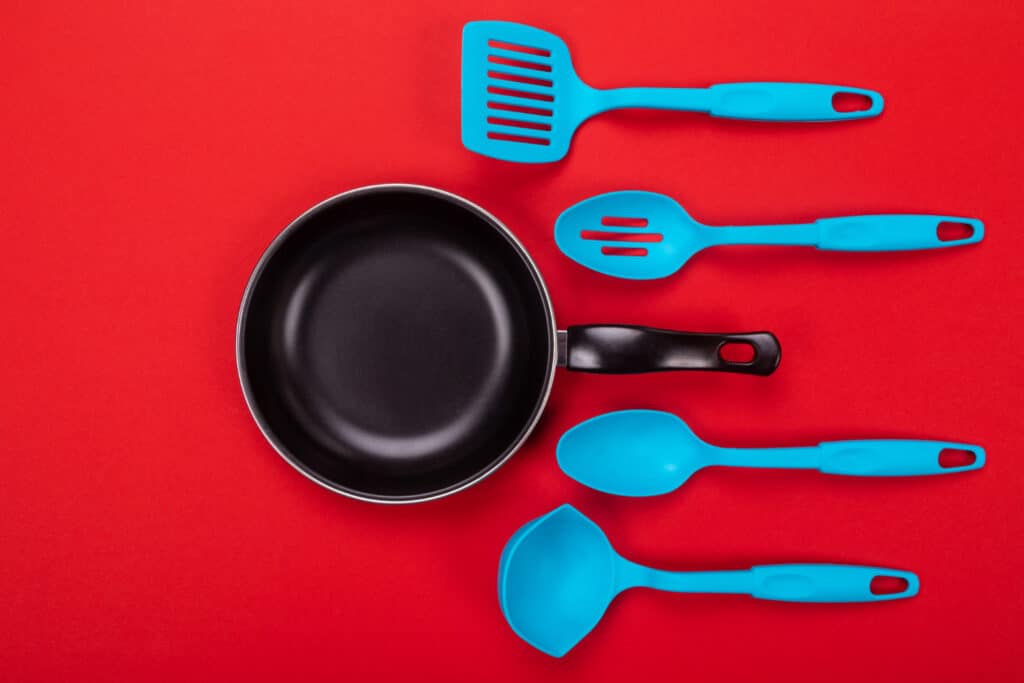
Why You Require Best Cooking Utensils for Non Stick Pans?
Whatever spatula or stirrer you pick, this is the first line of defence against the ruin of non-stick coatings. Whereas metal implements and heavy weight wooden spoons can etch the coating with scratches that, over time, will interfere with its integrity. All of these flaws will result in foods sticking while they cook and scrubbing it off later is more challenging.
Furthermore, again, some materials such as aluminum react upon contact with tending victims to develop an adverse lingering sapor or poisonous foliage. If you use the correct utensils, you won’t scratch the non-stick coating, and clean-up will be easier for years’ worth of future meals.
Why You Need the Right Utensils With Non-Stick Pans?
Scratch Prevention
The ultra-modern non-stick coating is designed to make cooking and cleaning easier than ever, but using inappropriate cutlery — metal knives, forks or spatulas — can easily damage the non-adhesive layer. When the layer is compromised, foods stick to the pan, and its effectiveness decreases with age.
Sustaining Durability
Using appropriate utensils preserves the coating of the pan, which means your cookware will stay in a great condition for quite a long time. Using the right utensils protects your non-stick coating from scratches that speed wear and tear, so you can get twice the use out of your pots and pans.
Safety Considerations
Certain coatings, like metallic ones, are not only capable of scratching your non-stick pans; they can also react with foods to produce odd tastes as harmful chemicals may leach into what you consume. Choosing appropriate tools for the job helps ensure your health by protecting coatings.
What Are the Best Materials for Non-Stick Cooking Utensils?
Silicone
Silicon is the Best option for non-stick cookware; it is very flexible, heat resistant and will not scratch the surface. They are well-suited for stirring, flipping and scraping without scratching the pan’s surface. They can also be safely used at high cooking temperatures and are usually dishwasher-safe.
That said, if silicone utensils are becoming your go-to cooking tool, make sure they are BPA free for safety and durability reasons. Silicone can syphon out BPA or spoliator deteriorate after too much hight heat so ensuring high grade BPA free utensils is the key. High-quality silicone tools will extend the life of your utensils as well as your non-stick pans.
Wood
They’ll do great with non-stick pans because wood is non-abrasive and won’t react with food. These kitchen workhorses are great for stirring, mixing and serving without scratching the non-stick coating. They are also biodegradable and environmentally friendly which make you quite sustainable about the types.
Wood utensils are stain-resistant and will not scratch cookware if properly maintained. But not as durable as materials than can crack in some application, and are splitting when they are treated the incorrect way and are not resistant to heat, such as silicone, needs more their signals. Opting for the ones that are made from hardwoods such as maple or beech for better wear.
Bamboo
Another thing one needs for truly non-stick pans is bamboo, which is light, non-reactive, and durable, as well as eco-friendly. And its non-stick layer is also naturally antimicrobial, making it reliable, hygiene (Handy)! For example, soups, curries, salad, toss and so on You stir in a mix They are also a sustainable and renewable resource.
But they need to be properly maintained to avoid splintering and drying out. Bamboo utensils that have been oiled a few times a year with food-safe mineral oil are not going to crack, and they are going to last a long time. Eco-friendly bamboo utensils are lightweight and easy to handle so often extend cooking sessions!
Nylon
Made with lightweight and durable bamboo, plus, it’s non reactive, making this the ideal utensil to use with your non stick pans. It comes with an inherent antimicrobial non-stick coating, so one does not have to worry about hygiene and safe cooking. If you’re combining your ingredients, bamboo spoon utensils are mostly useful for mixing your soups, curries, salad. Primer: They are sustainable and renewable, thus have a lower carbon footprint.
But it requires attention not to split and shrivel. Bamboo utensils can be preserved and given a longer life by oiling them regularly with a food-safe mineral oil. Plus, bamboo utensils are light and easy to hold; perfect for marathon cooking sessions.
Turn Your Non-Stick Pan Utensils Into Your Friends
Material
When it comes to non stick cookware, the material that your utensils have to be made of really strikes a chord. The most popular, safe options are silicone, wood, bamboo and nylon. Silicone is heat-resistant and flexible, wood and bamboo is environmentally-friendly and gentle on pots and pans, and nylon is super durable yet inexpensive. There are pros to each material otherwise: Silicone is great for versatility, wood and bamboo are a more sustainable option and cut down on bacteria, and nylon is great for the budget-minded cook. Choose the material that would serve you best, based on your cooking style and tastes.
Heat Resistance
Non-stick pans are also. Are designed to resist temperatures, so it’s will incredibly important that you’ve got heat-resistant tools. When using high heat with your non-stick cookware, silicone and wood are generally safer to use. If nylon is exposed to extremely high temperatures for long periods of time, it can melt, which is also why people don’t use it in truly hot cooking situations. For both safety and durability, always choose utensils according to your pan’s heat tolerance.
Maintenance and Care
Wood and bamboo utensils need a little pampering if you want to keep them in tip-top shape. Oil them periodically with food-safe mineral oil, too, which improves the chances they won’t crack, warp or dry out. “That way you’ll keep their durability and look.” Silicone and nylon utensils, on the other hand, are much easier to care for. Most are dishwasher-safe, so cleanup couldn’t be simpler. Silicone is more forgiving about high heat and requires nearly no upkeep; nylon requires less maintenance than silicone but doesn’t stand up well if it gets a lot of heat because it melts.
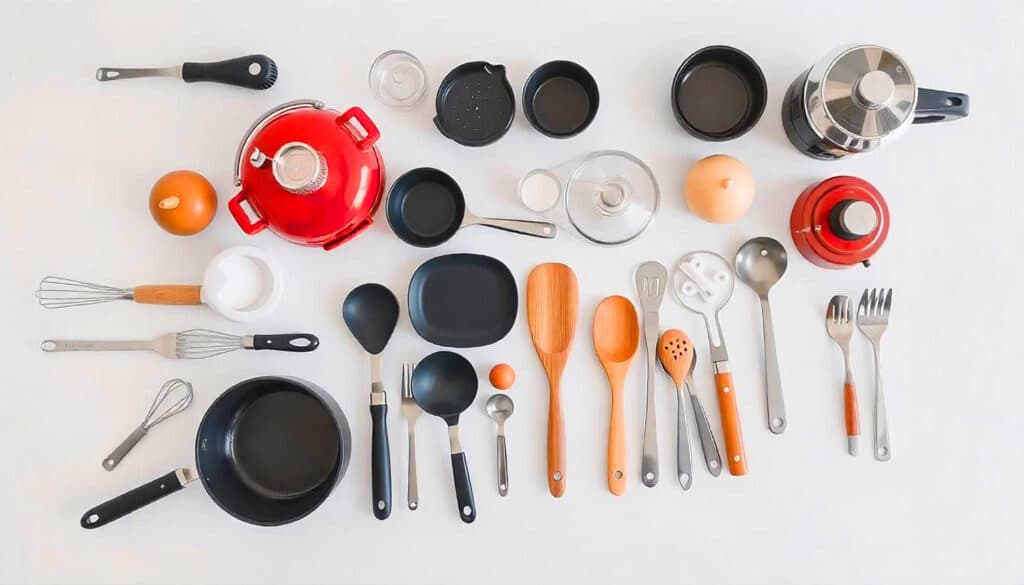
Our Expert Recommendationto Shop
1. Umite Chef Kitchen Cooking Utensils Set, 33 pcs Non-stick Silicone Spatula Set
2. GreenPan 5 Piece Cooking Utensil Set
3. Kaluns 50 PCS Silicone Kitchen Utensils Set
4. Large Silicone Cooking Utensils Set
5. Silicone Cooking Utensils Set
6. 14 Pcs Silicone Cooking Utensils Kitchen Utensil Set
7. GreenPan Silicone 7 Piece Cooking Utensil Set
8. HOTEC Food Grade Silicone Rubber Spatula Set
9. Stainless Steel Kitchen Utensil Set-Fungun 28 Pcs
10. All-Clad Specialty Silicone Kitchen Gadgets 5 Piece Set
Factors to Keep in Mind While Making Meals
This abrasive action can easily scrape the non-stick surface off of non-stick pots and pans, meaning metal utensils such as spatulas or knives should never be used with these types of pots or pans. And once the non-stick layer is damaged, food will stick rather than slide smoothly off, as designed. This undermines the point of the specially-treated cookware and hastens its demise. Silicone, wood or bamboo tools are far more intelligent choices for gentle food preparation that guards your non-stick surfaces against damage.
Cheap plastic utensils are also bad news with heat. Such flimsy things can melt, warp, or give off noxious fumes when pan temperatures rise in the kitchen. The damage not only affects the utensils themselves, but any chemicals released that are not pleasant could end up contaminating foods. And to prevent both ruined cookware and borderline hazardous meals, choose utensils made of tough, heat-resistant materials, like high-grade silicone, designed to endure the temperatures of cooking without whimpers. Ensuring both cook and cooked are well requires the shifting of measures that protect non-stick coatings and health.
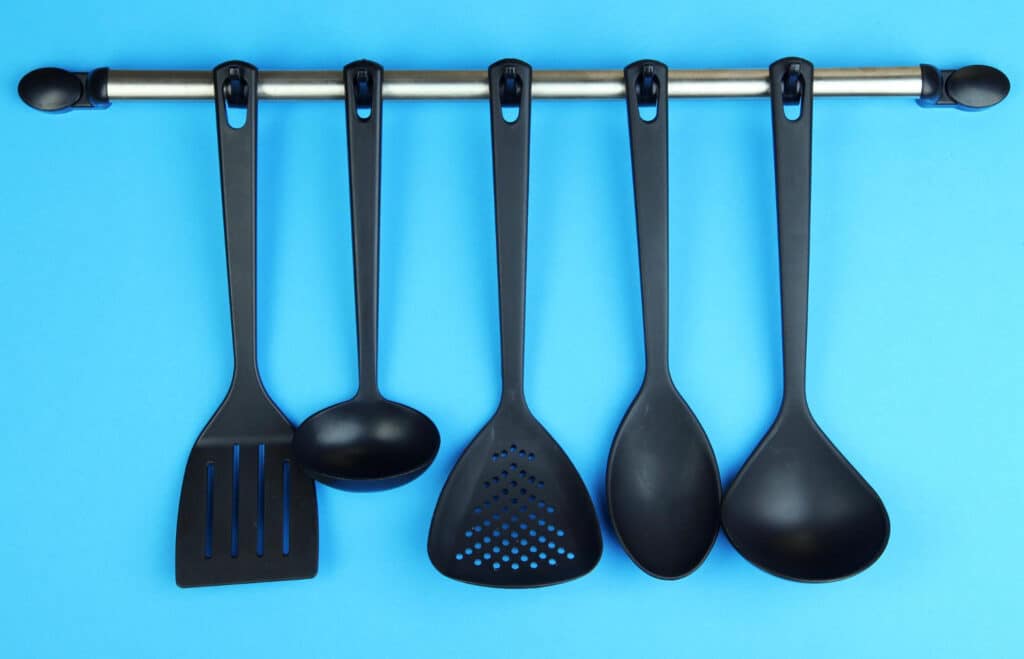
How to Maintain X Non-Stick Cooking Utensils
Cleaning
Proper care of the non-stick utensils will improve their lifespan whether they are used day to day or once. Some types can be scrubbed in seconds, while others require a more gentle approach. Here’s how to keep yours purring.
Silicone and nylon can go for a spin in the dishwasher for easy cleanup. Their sturdy construction allows them to be washed in a machine. But delicate woods need tender loving care — a light hand-wash with mild soap and warm water helps prevent premature failure. If over-wet, they will absorb moisture too, which leads to distortion over time.
Avoid High Heat
So are high temperatures. Heat might also have warped flexible plastics on the spacecraft, and so, after 14 years of high-temperature exposure, they may be deteriorating faster than expected. Nylon, for example, breaks down at over 400 degrees Fahrenheit. Over time, that shearing will destroy even heat-resistant silicone. Savvy gadget observance saves great helpers from unnecessary traumas. It makes their non-stick magic cling for endless family feedings, with only a few simple no-no’s.
Storage Recommendations
Store your utensils away from direct sunlight and from heat sources in a cool, dry place to keep them in great condition. Wood and bamboo turners, spoons and utensils shouldn’t be placed near stoves or hot, humid areas. These materials, when properly stored, won’t shrink, expand, warp, turn brittle or crack over time, which promises longevity.”
When to Replace
Routinely check your utensils for wear and tear. A worn-out silicone appliance, split (or melted) bamboo and melted nylon are signs it’s time to switch it out. But frayed tools can become ineffective, and they could even scratch your cookware or pose a hygiene risk. These should be replaced to keep cooking safe and efficient.
Our Expertise: Why Believe Us!
Modern Kitchen Gear was founded by a group of kitchen enthusiasts. Who are highly kitchen accessories experts. As a reliable source for kitchen accessories reviews and advice. Our expert team members often do super shop visits. Some of them get real time experience from their usage. They write down the benefits and what sets apart the product specifically. Our team members also carefully listen to the expert and note down all the matters.
We have dedicated people to test products too. For the purpose of a valuable analysis to guarantee that we deliver real and transparent thought to our customers. Modern Kitchen Gear hires professionals for delivering best quality and valuable articles. Our expert content writers and copywriters then write it very carefully. To express the real outcomes that help readers to make informed purchasing decisions.
Final Consideration
Keeping non stick cookware and enjoying a lengthy meal is best served by the careful selection of utensil Silicone, wood, and bamboo also are versatile, heat-resistant, eco-friendly and cost-efficient. This makes for a strong nylon material that’s relatively cheap but can be susceptible to blistering heat. Cookware like mates helps to protect pans and media from scratches and maintains a long lifetime for cooking, to feel organized for years.
How We Tested & Reviewed
Grace Morgan and Clover Jace are performing exhaustive product tests, including real-world application and usage in a variety of circumstances. They analyze durability, slip resistance and cleanability; Clover Jace brings a new eye to comfort, use and design. This approach finds the right product for clients while all the reviews are genuine, relevant, and unbiased.
